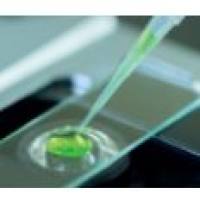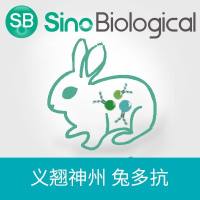Glycoconjugates on cell surfaces are known to have important physiological and biological functions. The oligosaccharide components
of the cell surface glycoconjugates are recognized as important mediators of cellular interaction and interaction of cells
with ligands such as hormones and growth factors (1
,2
). In normal tissues, such molecules (receptors) form part of the transmembrane structures linking extracellular signals with
intracellular transducers of the received information (3
) Disruption of these receptors results in loss of transmembrane communication and hence cellular dysfunction Oligosaccharide
domains of cellular glycoprotems and glycohpids are synthesized by a series of hierarchically organized glycosyltransferase
enzymes within the Golgi apparatus. Structural modifications to oligosaccharide domains of these glycoconjugates occur during
ontogeny and oncogenests (4
,5
). It is increasingly recognized that these modified oligosaccharide domains (antigens) on cancer cells may represent the
accumulation of precursor chains with absence of more complex structures because of decreased activity of synthesizing enzymes
for terminal components of the carbohydrate chains. In addition, neosynthesis of new saccharide structures may occur because
of enhanced synthesis of new components, often because of aberrant fucosylation or sialylation or a combination of both It
has been postulated that altered glycoconjugates interact in vivo with lectins associated with the membrane of corresponding
cells, as is thought to be the case in the interaction between tumor cells and endothelium in the course of seeding of metastases
(6
). Increasing awareness of the major significance of cell surface glycoconjugates has led to a rapid expansion in techniques
for their analysis.






